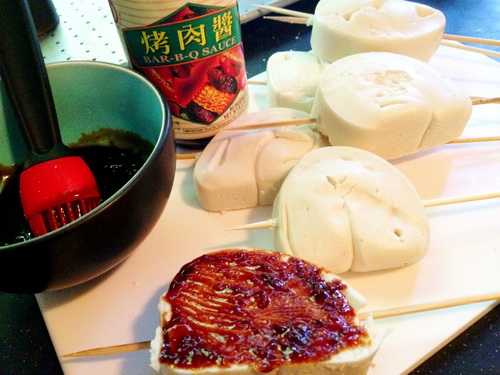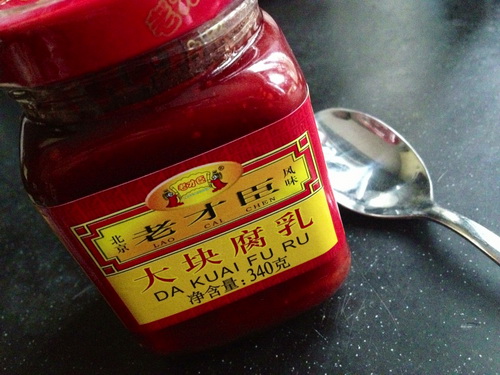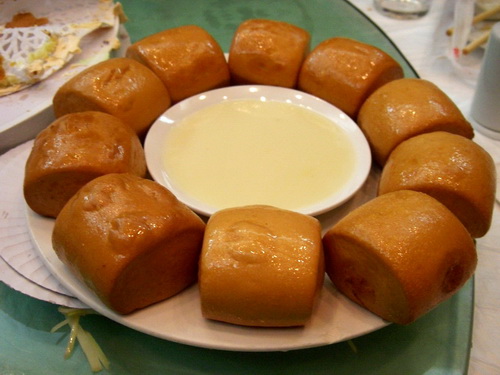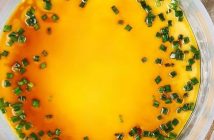
Before moving here, our only exposure to Chinese food was from the many Chinese restaurants in the Philippines and a brief vacation in Hong Kong. What we didn’t realize at the time was that our palate was only getting acquainted with Cantonese cuisine.
Upon learning that we would be living in Beijing, we were excited about being in the land of cha shao bao (roast pork bun), shao mai (steamed dumplings), and the Philippine interpretations of “Chinese” food, which we called "Shanghai spring rolls" and "Canton noodles."
On our first day in Beijing, we decided not to take the company’s offer of temporary housing and instead moved straight into our rental home in Shunyi (I’ll save that story for another time). Thus, we had to make a trip to both Ikea and Carrefour. On the same day. Which was a Sunday in June.
After the culture shock of being at Ikea on a sweltering summer Sunday morning, encountering what felt like the entire population of Beijing, we were hungry, cranky and beginning to suffer from jet lag. What better way to beat the blues than to hit the grocery store and sample local food, we thought? Our favorite dim sum dishes couldn’t be too difficult to locate.
Oh, how wrong we were.
First of all, nothing in the Chinese deli section of Carrefour remotely resembled the bite-sized delicacies in bamboo steamers we had come to know. But then, we stumbled upon a long row of fluffy buns. Most were white, but some were dyed orange, purple, or green.
We had no idea what was in each of these buns, so we got one of eachand used hand signals to communicate what we wanted. Surely, our coveted cha shao bao would be somewhere in the 12 to 14 different varieties on display.
Oh, how terribly wrong we were.
We got back home and proceeded to break the bread in search of the reddish barbecued pork filling. Nothing. Instead we came up with chopped carrots, chopped chives, pickled something-or-other, and what-was-in-that-mush?
And thus, we were quite rudely introduced to Beijing mantou.
Now, we’ve gotten our heads wrapped around the fact that not all Chinese food is created equal, that mantou is the staple bread in many regions, and that the various fillings used by Beijing ren are actually delicious. We often seek out mantou for an easy snack or a filling meal. We don’t always stick to the traditional sides, but we’ve come to love it and make it our own.

The Joy of Mantou
There truly are many ways to mantou. Try any one of these combinations or come up with your own. Mantou can be bought fresh from the Houshayu market or frozen at any grocery store. Simply steam them for ten minutes and serve hot. Expect to spend roughly RMB 6 for ten mantou.
A traditional Beijing breakfast calls for steamed mantou served with pickled veggies on the side. Popular choices include pickled radish, spicy cabbage, or fermented tofu. The latter is a bit of an acquired taste. Warning, the pickled veggies are extremely strong so a little goes a long way. Ask for help locating the xián cài. Small jars cost anywhere from RMB 5 to RMB 10.
Barbecuing is another way to enjoy mantou. Slice one bun into two or three slices; each should be about as thick as toast. Skewer them on barbecue sticks and brush a thin layer of Chinese barbecue sauce on one side of the bread. If you like it spicy, sprinkle some cayenne or paprika on top. Place the mantou sauce side up on the grill. This works best with a lidded grill for more even toasting, but an open grill works fine too. Barbecue sauce (as it’s written on the jar in English) costs approximately RMB 8.
Taking inspiration from Cantonese cua pao (a kind of mantou sandwich with stewed pork and sweet peanut sauce), we eat mantou with nearly any meat or vegetable filling. Just like using a slice of crusty baguette to sop up sauces, a slice of steamed mantou makes a good receptacle for any number of Chinese saucy dishes. You can top it with gongbao chicken, dongpo pork, soy sauce stewed eggplant, or braised tofu.

Mantou can also be a dessert. Most restaurants have a friend mantou dish served with a dish of condensed milk for dipping. This is popular with kids and those with a sweet tooth.
We haven’t tried replicating it at home, but it seems fairly easy. Simply buy mini mantou, steam them, then fry the buns in oil until they turn brown. Finally, serve with a generous dollop of condensed milk. The latter can be found in tubes or cans at supermarkets like Jenny Lou’s. Condensed milk in Chinese is liàn nai and retails for about RMB 3.
The possibilities for mantou are endless, so you’re sure to find at least one filling to suit your palate. Let us know how you like your buns. Bon appetit!
Photos by Dana Cosio-Mercado
Dana is the beijingkids Shunyi Correspondent. Originally from the Philippines, she moved to Beijing in 2011 (via Europe) with her husband, two sons and Rusty the dog. She enjoys writing, photography, theater, visual arts, and trying new food. In her free time, she can be found exploring the city and driving along the mountain roads of Huairou, Miyun and Pinggu.



